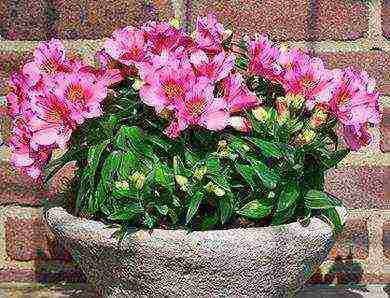Content
- 1 Self-collection of primrose seeds and their selection for sowing
- 2 Sowing primrose seeds immediately after harvest and winter sowing
- 3 Soil and containers for sowing
- 4 Sowing dates of primrose seeds and pre-treatment
- 5 Different approach to sowing primroses
- 6 Frosty stratification, or the classic primrose sowing method
- 7 Cold stratification, or a simplified primrose sowing method
- 8 Conditions for germination of primrose seeds
- 9 Growing plants
- 10 Primrose seedlings dive
- 11 Hardening primrose seedlings
- 12 Planting primroses
- 13 Features of growing primroses
- 14 Seed stratification
- 15 Seedling care
- 16 Primrose from seeds harvested in the garden
- 17 Transplanting seedlings to a permanent place
- 18 Primrose varieties for growing at home
- 19 Sowing primrose at home
- 20 Growing primrose from seeds at home
- 21 Location and lighting for primrose at home
- 22 Temperature for primrose at home
- 23 Soil for growing primrose at home
- 24 Watering primrose at home
- 25 Spraying primrose at home
- 26 Top dressing primrose at home
- 27 Pruning primrose at home
- 28 Transplant primrose at home
- 29 Pests and diseases of primrose
- 30 Primrose cultivation and care video
For gardeners who love growing their own seedlings, growing primroses is no less than a challenge. These small garden plants, although they remain one of the most traditional, are still so colorful and varied that they have successfully won the title of stars of modern landscape design. Combining unique talents of "piece" accents with ease of care, primroses are not so simple.
Primula tall, or Primula tall "Crescendo Blue Shades" (Primula elatior ‘Crescendo Blue Shades’)
Growing primroses from seeds is not easy, and more often than not, nothing depends on you. And the first thing to be prepared for is failure. No matter how scrupulously you follow the advice, to get the same friendly shoots as a Shabo clove or a lobelia, you can succeed only if you have luck on your side. And if you tune in advance that even a few plants is a great success, the achieved success, then your undertaking will be all the more valuable and joyful. The loss of some of the plants does not mean at all that it is impossible to grow primroses yourself and should not be tried. The complexities make the process itself insanely fun.
Primroses are legendary and very diverse plants, which are united only by their small size and shape of growth. Herbaceous perennials with large pubescent leaves and heads collected in a basal rosette, shields and umbrellas of inflorescences of touching bright flowers in a flower bed look albeit a tiny, but luxurious accent.
Representatives of the genus primrose (Primula) - one of the most beloved spring flowering plants. But they are so diverse that among the many species there are both the classic inhabitants of flower beds and those beauties who are ready to settle near water bodies or bloom at atypical times - in summer. The genus of primroses includes about half a thousand species of plants, and all of them are equally interesting and beautiful.For convenience, they are divided into sections according to the main decorative features. And if in the case of the legendary dentate-leaved, cortex-shaped primroses it is easy to understand, then other names are far from so eloquent. It is much more practical to classify charming crumbs by type of flowering - capitate, candelabra, bell-shaped, cushion-shaped and umbrella primroses offer a selection of amazing varieties with different colors and sizes.
The seed method of reproduction is equally difficult for all primroses, without exception, most species need stratification, and the conditions for their germination most often differ significantly.
Self-collection of primrose seeds and their selection for sowing
Primrose seeds ripen in fruit pods. They are very small, spherical or cylindrical, with a dark color, in 1 g "fit" up to 2 thousand seeds. But such fertility does not at all mean that you can get a huge number of plants. Seed propagation is very difficult and requires patience and endurance. But it is better to hurry up with sowing primrose: seeds, even before spring sowing, when stored under ideal conditions, lose their germination by 40%. But the most important thing is that the time it takes for them to germinate increases dramatically within a few weeks after collecting the seeds. Therefore, it is best to use primrose seeds immediately after harvesting and lightly drying (or even without it at all). The seeds ripen in July and August, they are harvested when the capsules are slightly open, but not yet fully opened (to prevent spillage and avoid the need to constantly monitor the capsules, it is better to tie the capsules with a transparent cloth). It is necessary to keep the seeds only cool, the temperature even at 20 degrees Celsius is considered very high for primrose seeds.
Primrose seeds
If you want to experiment with self-breeding new varieties and colors, you can resort to the cross-pollination method. To do this, during flowering, you just need to arm yourself with a brush and transfer pollen from different bushes and different varieties to others.
Experienced flower growers always recommend keeping primrose seeds from their own garden, carefully collecting them annually and keeping them cool until spring. So you will always have a chance to grow new plants if your favorite bushes and varieties die as a result of winter. And for some primroses, seed reproduction is the only option that will help you observe flowering in all its glory. We are talking, first of all, about the Japanese primrose, which blooms magnificently only at the age of two and three years and requires periodic replacement with new plants grown from seeds.
Today, a huge number of primrose seeds are on sale, and the choice can be made between mixtures of varieties and individual varieties, and among the varieties there are both conventional and hybrid. When buying the latter, it should be borne in mind that plants may not retain varietal characteristics or retain them only partially. It is better to make the choice based on the aesthetic qualities, sizes and characteristics of the agricultural equipment recommended by the manufacturer. But the main attention should be paid to studying the timing of the collection of seeds and information about the period of their recommended use. The fresher the seeds are, the better. But be prepared for unpleasant surprises: the same seeds from the same batch in different stores may sprout differently. You will not find information about the temperature of their storage in the store, so there are no guarantees that primroses will rise at all. The newer and more expensive the variety, the greater the risk. And in fact, 99% of the probability of success still depends only on the seeds, and not on the specific agricultural technology for their germination.
Sowing primrose seeds immediately after harvest and winter sowing
If you have the opportunity to sow immediately after harvesting, then the seeds must be sown in high-quality garden soil in boxes dug in the beds or in open beds. The soil is poured abundantly before sowing.Sowing is carried out shallow, in grooves or superficially. Since sowing is carried out in the summer, the plant needs to be provided with mulching and constant watering. Thinning is carried out after the release of the second pair of true leaves. Young plants are protected for the winter with a thick layer of dry mulch (up to 10 cm, preferably from dry leaves).
Sowing in winter is also best done in boxes, not earlier than stable night frosts come, and the soil begins to freeze. For primrose, it is imperative to ensure the presence of not only a sufficiently large number of drainage holes, but also the laying of a thick layer of drainage materials at the bottom of the boxes. Even before winter, primrose seeds are sown superficially, only slightly covering them with soil from above, but sowing is carried out as thickly as possible. As protection from weeds, soaking and snow, the crops are covered with any non-woven material or film. The boxes are left in a semi-shaded place until spring, trying to remove the lutrasil immediately after the snow melts. Young primroses will need regular watering; even short-term drought should not be allowed for seedlings.
Seedlings of primrose seedlings
Soil and containers for sowing
For growing primrose, it is better to use fertile, loose and rather rough in structure soil. For sowing seeds, either a classic seedling substrate is used, or a mixture is prepared independently of equal shares of soddy soil and sand and a double share of leafy soil. There is no need to sift the soil before sowing, but after filling the containers, it must be carefully leveled, making sure that there are no grooves and pits (the seeds are small and fall through easily).
The containers are easy to pick up. For primroses, classic seedling containers with a height of 5 to 7 cm are suitable. When sowing in large containers, it is important to make sure that there are high-quality drainage holes. Instead of a "common" box, you can sow primroses in small pots, cassettes, containers with cells.
Sowing dates of primrose seeds and pre-treatment
The optimal time to plant primrose seeds is considered to be the time of their collection: the faster the seeds get into the soil, the more likely it will be to succeed. Accordingly, ideally, sowing is carried out in July or August, but for this option, agricultural technology and plant care change significantly. If you want to get classic seedlings, then the sowing time is limited to February (if it is possible to organize artificial supplementary lighting, sowing can be carried out in January and December). The soil before sowing is by no means watered for all species that need stratification.
To prevent the spread of fungal diseases, before sowing, self-collected primrose seeds can be additionally soaked in a weak fungicide solution or a weak solution of potassium permanganate (a procedure in 20 minutes is quite enough).
Different approach to sowing primroses
All primroses, except for fine-toothed and ordinary primroses, as well as some hybrid varieties, need not quite usual processing after sowing - cold stratification. But there are several strategies for cold treatment of the seeds of these plants, and they are radically different. Primroses can be stratified both by low negative temperatures and in a more gentle mode. Accordingly, there are two main strategies for growing seedlings:
- The classic method with a frosty phase.
- Simplified method with low positive temperature treatment.
Picking up seedlings of primrose grown from seeds
If you do not have the opportunity to place containers in the refrigerator with soil, then at least place the seeds themselves in the freezer for at least 12 hours. In this case, the cultivation is similar to primroses without stratification.
To avoid unnecessary hassle, carefully study the recommendations on the seed packaging for hybrid primroses: if they do not need stratification, then stratification is just an extra waste of time, which will not affect seed germination in any way.Your success will only depend on their quality.
Frosty stratification, or the classic primrose sowing method
If you want to use the classic and most reliable method, then sow only on dry soil and on the surface. The seeds from above cannot be covered with even a thin layer of sand or sifted substrate: they only need to be pressed into the ground, but not too hard, but only by fixing them. Sometimes sowing in the snow is recommended, it can simplify the process itself, and help the seeds to "get sucked in". The optimal planting density for primrose can be a critical parameter, misses in density are immediately felt at the stage of growing young seedlings. Primrose seeds are not laid out very thickly, so that no more than 5 seeds fall on 1 square centimeter of soil. Despite their small size, it is better not to mix primrose seeds with sand and lay them out by hand, using a toothpick or tweezers.
After sowing, do not spray the seeds from above. The containers just need to be covered with foil or glass. But do not rush to carry the containers to the windowsill: the primrose germination strategy is special.
Containers of sown primrose seeds covered with foil or glass should be sent for stratification. It is considered optimal to be kept in temperatures from -5 to -10 degrees for at least 10 (and ideally 20-30) days. A freezer is quite suitable for primrose, but you can simply put the containers outside (if the weather is frosty, watching the thaws), dig in a snowdrift or garden.
Cold stratification, or a simplified primrose sowing method
Today, instead of freezing, a method of simpler stratification is also used - at low, but positive temperatures. The growing process is faster, but the likelihood of success is lower with this method.
There are two planting strategies that can be used for primrose without freezing temperatures:
- With preliminary "swelling" of seeds outside the soil;
- Direct sowing in the ground with exposure first to warm, and then to cold conditions
Seedlings of primrose grown from seeds
Pre-soaking primrose seeds is best done on a foam sponge cut into two parts (or with deep cuts in which you can put the seeds). The sponge is well moistened, the seeds are laid out on the surface, and then cover them on top with the second half of the sponge. Having placed such an "oasis" in a plastic bag or container, it is better to put it in the refrigerator for a week, at a temperature of 2 to 5 degrees Celsius, and monitor the maintenance of constant humidity of the sponge. After a week or less, the primrose seeds will swell and can be sown into the substrate as usual. But you can use other strategies as well:
- soak primrose seeds in warm water or a weak solution of potassium permanganate for a day, and then place them in the refrigerator before "pecking";
- spread the primrose seeds on a damp cloth and place them under plastic wrap in a warm place for 2-3 days, then refrigerate until the first signs of germination appear.
Swollen or primrose seeds that have begun to hatch are spread over the surface of a moistened substrate with a toothpick, moistening the tip in water and gently prying the seeds. There is no need to press them into the soil, but the crops should be covered with glass or foil as soon as possible.
If you do not want to pre-soak, then sow primrose seeds directly into the soil, let them swell in it, and then place the containers in cold conditions. The seeds are simply laid out on the surface of a well-moistened substrate and immediately covered with glass or film. For 4 or 5 days, the containers are placed in the warmest place in order for the seeds to swell (you do not need to wait for the sprouts to appear, this stage must take place in the refrigerator). The dish is transferred to the refrigerator and left in cold conditions until the sprouts begin to awaken and the first shoots appear.The containers with primrose are transferred to standard conditions for full germination.
There is also an alternative strategy: put containers with crops in the refrigerator (or take them outside) only overnight, and keep them warm during the day. Shock changes can speed up the process of seed germination, but this strategy does not always work.
Sowing of primroses of hybrid varieties: fine-toothed and ordinary
For primroses that do not need freezing and cooling of seeds, sowing is carried out according to the same principles as when freezing, but sown on wet soil. Further, the cooling stage is simply skipped and the plants are immediately transferred to conditions for germination.
Conditions for germination of primrose seeds
Without exception, all primroses, both stratified and not, must be provided with the same temperature for germination - from 16 to 18 degrees. But not all primroses will need lighting:
- containers are exposed in the brightest place for hybrids, primrose, Japanese, pink, Florinda, pubescent (be sure to install scattering screens so that direct sunlight does not fall on the seeds);
- containers are placed in the shade, with full shade or covered with black film for Siebold primrose, fine-toothed primrose and tall primrose.
You can accelerate seed germination if you cover the seeds with a thin layer of snow for the first few days, but you should not count on the emergence of seedlings earlier than in two or three weeks. The later the sowing, the longer the seeds germinate. An important condition for germination in this phase is the maintenance of light and stable moisture. Drying out of the substrate is almost guaranteed to lead to a complete loss of crops. However, waterlogging is no less dangerous for primrose.
Before germination, all primroses need daily ventilation, film or glass removal. From the moment when the first shoots appear (for those who underwent non-frost stratification - the first false leaves), primroses must be slowly adapted to an open container, accustomed to air, opening the film or glass at first for 30 minutes, but increasing the airing time every day. It will be possible to completely remove the film or glass only after 10-12 days. By this time, the seedlings should be strong enough to survive in non-greenhouse conditions. There is no need to be afraid that primroses will simply "bury" in a shelter: seedlings develop so slowly that they are more likely to die from a violation of moisture, and not from contact with the film. Their rapid growth and development begins later.
Lighting for all primroses after the emergence of friendly seedlings should be bright, but diffused. Young plants cannot stand direct sunlight.
Growing plants
The slow development of primrose seedlings is the main reason that the diving of plants is carried out quite early: seedlings in a common container grow only until the first full-fledged leaf appears (in the strongest first shoots, by the time the first leaf is released, the rest can develop the second). Until that time, the main task is accurate watering. Plants are sprayed with a fine spray gun, evenly moistening the soil and trying not to soak the sprouts too much. The substrate, as in the germination stage, must be constantly moist, but not damp. Drying out of the soil is destructive.
Primrose seedlings dive
Primroses are usually grown with two picks. The first is carried out at the stage of one or two true leaves, transferring the plants as carefully as possible, avoiding contact with the roots, into individual cells or large containers with a distance of 5-6 cm between plants. Plants need the same care, with careful watering. After the first pick, primroses begin to grow actively.
The process of growing seedlings of primroses is often so delayed that by the time of the second dive, the threat of severe frost at night has completely disappeared and the plants can be transferred to open soil without diving. It is possible to plant such primroses in a permanent place, but it is better to plant them in a separate bed or flower garden for growing, and transfer them to the second year in the composition. If the weather is not yet suitable for planting in the garden, then young primroses dive into large containers or seedling boxes, keeping a distance of about 15 cm to honey with bushes. If necessary, the pick can be repeated a third time (if the plants are developing too actively, grow densely, then it is better to transfer them from the boxes to separate containers).
Hardening primrose seedlings
Primroses do not need tempering in the classical sense. If the seedlings still had to dive twice, then the plants can be taken out into the open air as soon as the daytime temperature rises above 10 degrees. It is better to keep large bushes or bushes blooming in seedlings in the fresh air for a week before disembarking.
Planting primroses
Primrose can be transferred to a permanent place in the garden either in spring, in May (when the threat of strong night frosts disappears), or in early autumn, growing in summer as pot crops. It is worth choosing protected locations for primroses with secluded lighting, high-quality loose, light texture and nutritious soil, but specific conditions must be selected in accordance with the recommendations for certain types of primroses. When planting seedlings in a permanent place, you need to carefully handle the root system, trying to cause the primroses as little harm as possible. But the main attention should be paid to the distance when planting: primroses are planted so that the plants have enough space for free air circulation around the bushes, but at the same time there is no free soil between the bushes (the optimal distance is from 20 to 30 cm for large varieties and 15-20 for small ones; this distance is enough for closing greens, but not too close proximity).
After planting, primroses are best served with some maintenance watering during drought. From the moment of the resumption of active growth, the plants are transferred to normal care. The only difference is that primroses obtained from seeds for the first two years will need additional shelter for the winter. Planting must be mulched, creating a layer of dry leaves about 10 cm high. Such a modest shelter will fully protect the crumbs from freezing and the vagaries of the weather.
Primroses obtained from seeds, as a rule, bloom after six months for hybrid varieties, but in some species, flowering begins only in the second or third year.
Alternative breeding methods for primroses:
- separation of bushes aged 3 to 5 years in the spring or in the second half of summer;
- separation of daughter sockets;
- root cuttings.
 Primrose is not only a beautiful, but also a rather unpretentious plant, because it can be grown in the open field and at home. The primrose pleases gardeners with early flowering, since its flowers open at the moment when the last snow melts.
Primrose is not only a beautiful, but also a rather unpretentious plant, because it can be grown in the open field and at home. The primrose pleases gardeners with early flowering, since its flowers open at the moment when the last snow melts.
Because of this feature, primroses are considered harbingers of spring. At such moments, the moist dark earth looks very beautiful, which is decorated with blossoming primrose flowers.
Features of growing primroses
 Primrose belongs to the group of perennial plants, so it can be grown in the same place for several years. If it is grown in a summer cottage, then after 7 years you need to think about a transplant.
Primrose belongs to the group of perennial plants, so it can be grown in the same place for several years. If it is grown in a summer cottage, then after 7 years you need to think about a transplant.
You definitely need to spend here division of small outlets, otherwise the primrose flowers will subsequently begin to shrink, the plants will degenerate, and the root system will weaken.
In natural conditions, primrose can often be found in damp, shady places... Its root system is close to the surface, so drying out of the topsoil negatively affects the development of plants. This must be remembered when growing primrose on a plot or in an apartment.
Reproduction of primroses
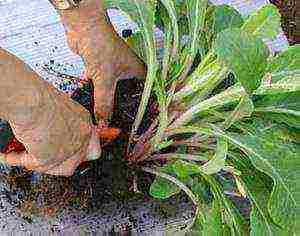 To obtain new primrose bushes, you can use the following methods: cuttings, sowing seeds, dividing the rosette. You can also propagate by rooting, which involves immersing a cutting with an axillary segment bud into the ground.
To obtain new primrose bushes, you can use the following methods: cuttings, sowing seeds, dividing the rosette. You can also propagate by rooting, which involves immersing a cutting with an axillary segment bud into the ground.
Method reproduction by dividing the socket received the greatest distribution due to its simplicity. To do this, you need to dig up a primrose bush, use a knife to divide it into groups or sockets.
In some cases, it is possible to separate the sockets directly from the ground, however, this must be done very carefully. For successful survival, it is recommended to use this breeding method in early spring.
Novice growers are advised to use any of the first three methods, which usually ensure good survival of primrose bushes. But there are situations when you have to use the breeding method sowing seeds... However, even experienced gardeners can face difficulties here.
When using seeds as planting material, you can wait for flowering only in the fifth month after germination. In general, primrose bushes grown from seeds do not differ from mother plants. The main thing is that they need provide the necessary care from the moment of sowing.
Seed selection
 When choosing seeds for sowing, it is necessary to take into account the conditions in which it is planned to grow this plant. For normal development, primrose needs to be kept cool.
When choosing seeds for sowing, it is necessary to take into account the conditions in which it is planned to grow this plant. For normal development, primrose needs to be kept cool.
Therefore, the optimal temperature for it will be no higher than 10 degrees. By fulfilling this condition, you can extend the flowering period of the primrose.
If you plan to grow these flowers in an apartment, then you can use primrose seeds.
When choosing seeds, it is necessary to take into account their expiration date and storage conditions. If they are purchased several months before sowing, then the seeds are kept in the refrigerator... Such treatment increases seed germination. In addition to seeds, you will need a soil mixture of the optimal composition, as well as fertilizer.
Seed stratification
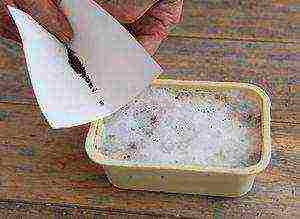 Since the primrose has a special biological rhythm, this imposes certain restrictions on its cultivation from seeds. Given that it begins to bloom after the snow melts, care must be taken to ensure that the primrose is in an active state long before this moment.
Since the primrose has a special biological rhythm, this imposes certain restrictions on its cultivation from seeds. Given that it begins to bloom after the snow melts, care must be taken to ensure that the primrose is in an active state long before this moment.
When sowing seeds in open ground, which is usually planned in April or May, a violation of this rhythm occurs. The way out here can be creation of conditions, as close to natural as possible.
This can be helped by such an operation known to many summer residents as stratification. Although it can be carried out in different ways, however, in general, its essence boils down to the fact that first the seeds are placed in a damp cloth until they swell at room temperature, after which they transferred to a cold place.
Here conditions will be created for them, similar to those when they are under the snow cover. At home, stratification can be carried out in the refrigerator. For owners of a private house, its replacement can be a cellar or a canopy.
What are the ways to carry out seed stratification
You can enjoy the flowering of primrose in early spring only if you start sowing seeds in mid-January.
-
 The first step is to hold the seeds for several days on a light windowsill.
The first step is to hold the seeds for several days on a light windowsill. - Next, they are placed in a bag with moist soil, which is placed in the refrigerator.
- In about two weeks, it will be time to place the seedlings on the windowsill. However, it must be protected from direct sunlight.
- Sometimes the seeds show no signs of life after a few weeks.In this case, the germination processes can be stimulated by moving the bag into the freezer, in which the temperature must be maintained at - 10 degrees.
It is important to ensure that the soil in the bag is constantly wet... In this case, seed germination occurs after 10 days.
Seed stratification can be done in a slightly different way.
- To prepare seeds for sowing and increase the percentage of germination, you can place them in a solution of potassium permanganate for three minutes, and then hold them in water for a day.
- When the seeds are swollen, they are sown in peat pots or boxes with garden soil. You need to place them in the soil to a depth that should correspond to the size of the seeds themselves. After sowing, small seeds should be lightly sprinkled with a layer of soil.
- To make the moisture evaporate less, a film is stretched over the boxes, after which they are transferred to a cold place.
- In the future, the soil must be constantly kept moist.
Sponge stratification method
If the first two methods of stratification did not fit for some reason, then the seeds can be prepared for sowing like this.
- If the primrose seeds purchased for sowing are rather small or there are a lot of them, then certification can be done with a sponge. First, you need to cut it a little so that longitudinal grooves are obtained. It is in them that the seeds are placed.
- The sponge must be placed on a tray or plate, after filling it with water.
- During the entire growing time, it is necessary to ensure that the sponge is wet. For seeds, it is necessary to create the coolest conditions possible.
- It is best to use a sponge with the smallest pores for sowing small seeds. However, if it turns out that the seeds are still very different from the pore diameter, then you can put fabric tabs in them before placing them in the cuts.
Seedling care
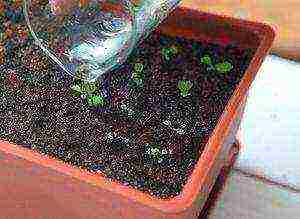 When the first two true leaves are formed in the seedlings, a pick is carried out. Two days after the pick, the seedlings begin to harden. This must be done only if it is planned to subsequently be transplanted to the site.
When the first two true leaves are formed in the seedlings, a pick is carried out. Two days after the pick, the seedlings begin to harden. This must be done only if it is planned to subsequently be transplanted to the site.
It needs to be taken out into the shade and the bag should be slightly opened. After about 10 days, when the seedlings get used to the fresh air, the polyethylene is completely removed.
From this point on, the seedlings are grown in a cool place, continuing keep the soil moist... Watering should be done very carefully, using, for example, a pipette.
Also, young seedlings of primrose also need feeding. Will be sufficient apply special fertilizers once a week. When the weather is warmer, the seedlings can be left on the open balcony for one day.
However, in the evening it needs to be brought inside again. A favorable moment for transplanting seedlings to a permanent place occurs after the last frost. The easiest way to remove the sprouts from the sponge is with tools such as a toothpick, knitting needle, or wire. It is not necessary to make a pick in relation to these sprouts.
Primrose from seeds harvested in the garden
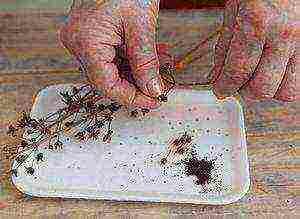 The easiest way to grow stemless primrose from seeds is to prepare planting material from already growing primrose bushes in your area.
The easiest way to grow stemless primrose from seeds is to prepare planting material from already growing primrose bushes in your area.
For example, you can arrange a beautiful primrose flower bed under an old tree. Then she will bloom every spring and provide you with seeds.
Naturally, in terms of their varietal qualities, they will differ from maternal, however, the main thing is that they will be able to delight the gardener with a more original color.
- until the day of sowing comes, primrose seed pods must be kept at a temperature of about 7 degrees Celsius;
- keeping them cool for a while, pretty soon fresh seeds begin to germinate;
- further, they must be transferred to the refrigerator, where they must be in a container for 2-3 weeks;
- then the moment comes to transfer them to a bright window, however, they need to be protected from direct sunlight.
During storage, the seeds can be affected by fungal and diseases. This can be avoided if, before sowing them treat with special preparations.
However, this operation can be omitted for seeds purchased at the store. You just need pickle soil, in which the sowing will be carried out. With regard to seeds collected in his garden, he acts by analogy with store seeds.
Transplanting seedlings to a permanent place
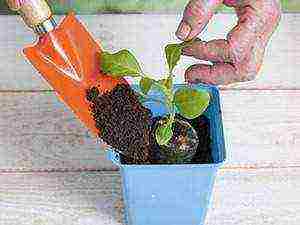 When the seedlings reach the state that they can be transplanted to a permanent place, it is recommended choose a suitable site for her. The stemless primrose will grow best in partial shade.
When the seedlings reach the state that they can be transplanted to a permanent place, it is recommended choose a suitable site for her. The stemless primrose will grow best in partial shade.
Before transferring the seedlings to the holes, they must be filled with compost and mineral fertilizer. If heavy soils prevail on the site chosen for transplanting, then it will not hurt add leaf land.
The largest specimens should be placed at least 30-40 cm apart. Smaller plants can be planted at a distance of 10-15 cm.
Primrose is one of the popular and well-known perennials that can be easily grown not only outdoors, but also at home.
The easiest way to get new plants is by dividing the bush, however, when there is no mother plant, you can use a more time-consuming method - sowing stemless primrose seeds.
Growing from seeds involves their preparation, for which stratification is carried out. This operation allows increase germination seeds, making them more resistant to disease.
It is very important to correctly determine the time for transplanting to a permanent seedling site. This should be done when the last frost has passed. In this case, with appropriate care, young primrose bushes will be able to bloom in the same year.
The very first bright spring flower is a perennial garden primrose. They are the ones who open the flower season in the garden.
Is the bone in your leg inflamed and painful? So that the protruding bone you ...
Perennial primrose and its hybrids are low-growing plants with a height of only 10 cm, with bright colors of flowers. They bloom as soon as the snow melts in April - May, and are considered the first spring flowers.
Primula growing from seeds at home
It is believed that growing primroses from seeds is difficult. Therefore, most often they buy new plants in pots or divide old ones. And, despite this opinion, we will share the way how primrose is grown from seeds at home.
In order for these perennial flowers to bloom early and abundantly, you need to prepare for planting them in late autumn or early winter. Years of experience say that fresh, stratified flower seeds emerge best. It is difficult to find such seeds in stores. Most often, last year's seeds are available, which germinate worse than fresh ones. However, you can always collect the flower seeds you like yourself and stratify your home.

How to stratify flower seeds at home
- Prepare a plastic container from under the cake - cut holes in the bottom to drain excess water;
- In late autumn, fill the container with fertile, garden soil;
- The soil should be loose and moist;
- Spread primrose seeds on the prepared soil at a distance of 1-1.5 cm;
- Slightly crush the planting, but do not cover it with earth;
- Moisten with a spray bottle;
- Close the lid.
The container with flower seeds prepared in this way must be buried in the garden so that the soil level in the container and the flower garden is equal. Thus, the stratification of seeds of garden primroses will take place in the most favorable and natural conditions.
In the spring, when the snow begins to melt, the lid must be opened, but the container itself must not be dug out.Water constantly so that the ground is always slightly damp, otherwise the primrose seeds may shed their shell and will not germinate.
When the seedlings grow to a height of 1 cm, they dive into a shaded area. New primroses are grown in light shade (these are shade-loving flowers), and in the fall it is already possible to transplant to a permanent place.

How to grow primrose from seeds
At home, it is possible to plant primroses for seedlings with seeds. As a rule, this is how new varieties are grown. You need to plant primroses for seedlings earlier than it is written on the seed bag. Here's a step-by-step guide on how to plant primrose seeds:
- Sowing primroses with seeds is carried out in early January.
- Fill any planting container with earth.
- Spread the primrose seeds over the top of the growing soil.
- Lay the snow on top in a layer of 1-2 cm. When the snow melts, it will draw flower seeds into the ground to the desired depth.
- Place the transparent lid on the landing container.
- Place the landing container in the refrigerator on the bottom stratification shelf.
- This method of stratification lasts about 2 - 3 weeks.
- Take out the primroses seedlings and transfer them to a bright, cool place where the temperature is 12-15 °.
- Moisten the soil regularly, it should not dry out.

Advice.
If after two weeks no green shoots are visible in the planting container, then you can put it back in the refrigerator for a couple of weeks. You can repeat such actions several times, since, unfortunately, primrose grows from seeds very slowly.
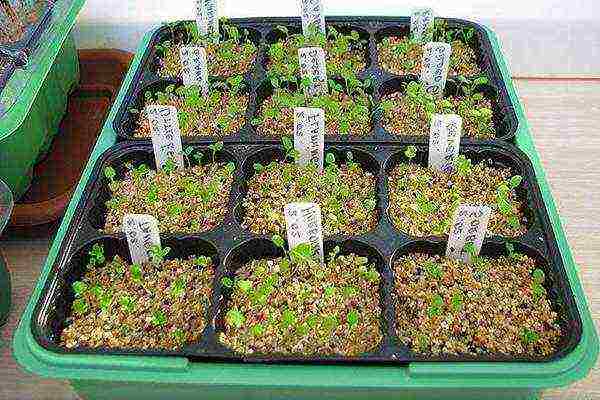
But already at the end of April - May, the resulting young flower seedlings can be transplanted into a shady corner in the garden in the open ground, and in the fall - to a permanent place.

Evening primrose planting and care in the open field
Primrose and terry primrose wake up very early in the spring, so the first mineral dressing can be carried out on a crust of ice.
When the weather is warm, loosen up the soil around the primroses with a garden spatula, sprinkle some fertile soil on the bare flower roots, remove last year's old leaves.
In the same period, it is necessary to water the plants with a warm solution of gummate, and after a week and a half, feed them with superphosphate.
After the plant has faded, apply organic fertilizer from the mullein solution. Flower buds of primroses begin to form next year, and the plant needs strength to grow and develop.
It is this simple care that leads to lush and double flowering.
An important feature is that primrose is hygrophilous, but does not like stagnation of melt water in the roots. From this, it can rot and die, therefore, for planting primroses in open ground, you need to choose a humus-rich and preferably shady place. It is a wonderful flower for shady places.

Unusual flowers - primroses auricular
Auricular primroses, or auricles (Auricula) - an extensive group of garden forms and varieties of the genus Primula (Primula). A wild species that became the basis for breeding is the ear primrose (P. auricula) from Central and Southern Europe.
They are short plants with thick rhizomes and fleshy leathery leaves. Peduncles and flowers are covered with a white powdery bloom. The petals are pink, lilac, purple, yellow, often with a light eye.

Auricles are especially loved in England, where they have been collectible plants since the 16th century. Over the past centuries, an incredible number of varieties and forms of ear primroses have been obtained in Britain: terry, variegated two-, three-flowered, iridescent mother-of-pearl, with exotic colored petals.
Auricles can be successfully grown in gardens and parks in central Russia. They are quite winter-hardy and unpretentious. Growing auricular primrose requires a sunny or semi-shady location, loose, nutritious garden soil with good drainage.
In spring - early summer, watering is especially important when there is a lack of soil moisture. Auricular primroses bloom in spring - early summer.They propagate well by seeds, that is, primrose ear cultivation from seeds is excellent, while the flowers bloom for 2 - 3 years and vegetatively - with segments of rhizomes.
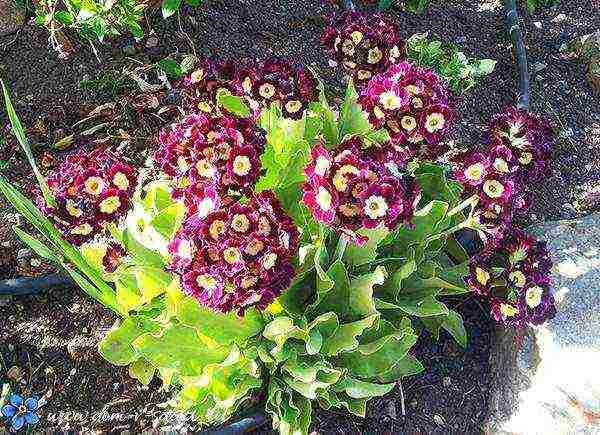
Source
Primula (Primula) is a herbaceous plant of the primroses family, which are distributed almost all over the globe, but mainly in Central Europe and temperate climatic zones of Asia and North America.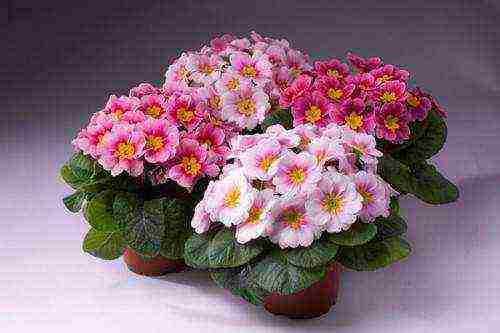
The name of the genus comes from the Latin "primus" - the first, which is explained by the fact that the primrose blooms in early spring, when the snow has not yet melted outside the window. In late February or early March, colorful bouquets in flower pots will cheer you up and can be a wonderful gift. Primrose arrived in our region from China. During flowering, this plant consists, as it were, of small "phonographs". It is very fond of experienced flower growers and those who received this plant as a gift. Now, in order to preserve it, you need to learn everything about caring for it.
How to deal with pests?
The dignity of the primrose is not only the varied and bright color of flowers, but also the ability to delight with its flowering for a long time. The plant has perennial, biennial and annual species. Indoor primrose has a fibrous root system, a very short stem and soft, slightly fluffy leaves. The color of flowers is lilac, pink, purple, milky white, dark blue, but the throat of the flower tube is always only yellow. There are usually a lot of flowers, they seem to be collected in a small bouquet.
Primrose varieties for growing at home
Among all varieties, the following types are especially suitable for rooms:
- Common primrose or stemless: it has wrinkled leaves and large flowers of red, yellow and blue shades.
- Primula soft-leaved: its homeland is China. It is an annual cultivar, reaching a height of 50 cm. It has serrated leaves up to 20 cm long and a pleasant aroma. The flowering period is in the second half of winter.
- Primula reverse conic: a perennial native to China, reaches half a meter in height. It has rounded drooping leaves and flowers of pink, red and blue. Some varieties are not poisonous and do not provoke allergies.
- Chinese primrose: grows up to 30 cm, leaves can reach 15 cm, flower diameter - 4 cm.The edges of the leaves are serrated, the flowers can be wavy. For annual flowering, it is required to organize a period of artificial dormancy once a year.
- Primula of Chusa: has a heart-shaped leaf shape with a characteristic white bloom, a pleasant smell and small yellowish flowers.
 Sowing primrose at home
Sowing primrose at home
When growing primrose as a potted plant, the time of planting the seeds does not matter, the main thing is the right conditions. However, it is more favorable to sow heat-loving primroses in the warm and light seasons, so that the plants grow stronger by winter. Usually, the cultivation of primrose from seeds in this case begins in May-June, and sometimes in July.
Useful articles about the garden, vegetable garden and flower garden
If primrose seeds are sown to obtain seedlings, which will later be relocated to open ground, then they begin to grow no later than January, and sometimes even in December. Later dates can lead to the fact that the seedlings will not have time to develop and will bloom not in spring, but only in autumn or a year later. Modern varieties and hybrids have a short sowing to flowering period. For example, primrose akaulis of the Primlet series is sown in February, flowering occurs in the same year. Pagent stemless primrose is recommended to be sown in March - flowering occurs in 4 months. Typically, from the moment of sowing to flowering, primrose takes about 5.5 - 6 months.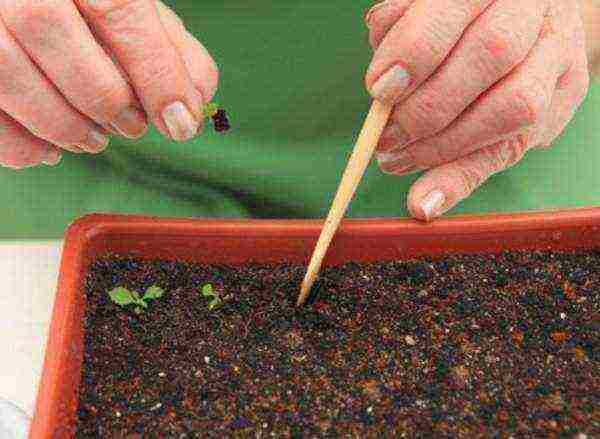
In the open field, cultivation from seeds begins either in late autumn (winter sowing) or in early spring. In the spring, it is useful to sprinkle the crops with snow. Non-wintering species are sown outdoors in late spring - early summer.
Growing primrose from seeds at home
If the plant is sown for the first time, then the seeds must be spread over the surface of the soil heated in the room. The soil itself must be placed in a pot, watered and abundantly sprayed with cooled boiled water. Next, the pot, covered with foil, is placed in the refrigerator, on the shelf where vegetables are stored. Crops should be checked and aired once a week. As soon as they germinate, they must be placed by the window, and a lamp should be placed on top.
Seedlings are aired every day for at least a quarter of an hour. After a week, you need to air it for about half an hour or more, and then remove the film altogether. A month after the emergence of seedlings, the sprouts are transplanted into separate pots. You need to add complex fertilizers to the soil and water the plant abundantly. After two months, the primrose will show its first buds.
If caring for primrose at home meets all the requirements, then large flowers with a unique aroma will soon bloom. Their color can vary from light to rich. Over time, even novice florists will have experience in growing primroses, people get used to caring for the plant, and the plant gets used to the person and to the conditions in which it grows.
Location and lighting for primrose at home
Primrose is very fond of light and moderate heat, but not direct sunlight, but diffused lighting. The primrose flowerpot is best placed on a windowsill located on the east or west side of the room.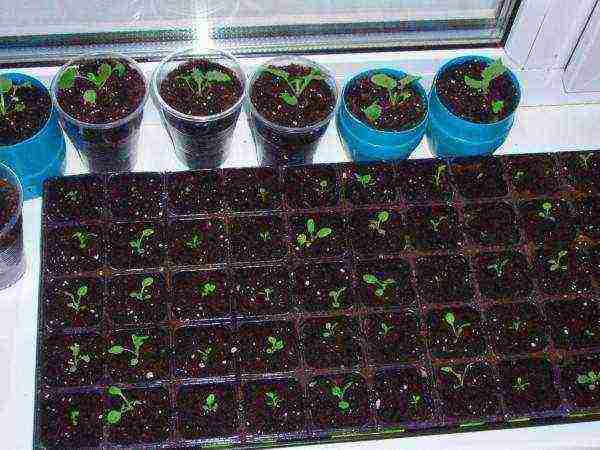
Temperature for primrose at home
It is better to grow primrose in a room with a temperature of 12 to 20 degrees Celsius. In winter and spring, during the flowering period, the most optimal temperature is 8-12 degrees Celsius. At this temperature, the plant remains blooming and beautiful for a long time.
When the flowering period is over, the plant can be transplanted into open ground. The ideal place for primrose will be a shady area under the crown of a tree, which will provide her with reliable protection during heavy rain or from hot sunlight.
For the winter, you can again make the primrose a houseplant, but it's okay and leave it to winter in the garden. These flowers do great as garden flowers and can overwinter outdoors in temperate climates.
Soil for growing primrose at home
The optimal soil for indoor primrose is a mixture of fertile sod or deciduous soil, peat and sand. Be sure to create a drainage layer in the pot. You can use special mixtures purchased from stores that are designed for flowering indoor plants.
Watering primrose at home
Sowing calendars for 2017
Indoor primrose needs moderate watering (a couple of days after the top layer of the earthen mixture has dried). During the flowering period, the plant is watered more often - immediately after the soil on the surface of the pot dries up. For irrigation, only settled water is used and it is impossible to get water on the leaves - they begin to rot from this. To avoid this, it is best to water the primrose plant through a drip tray or by dipping.
Spraying primrose at home
Caring for primrose at home does not require special manipulations to increase air humidity - primroses are not demanding on it.
Top dressing primrose at home
A primrose in a pot needs feeding only twice - in the twenties of June (organic fertilizers are applied, you can use a solution of bird droppings) and in the tenths of August (0.1% aqueous solution of ammonium nitrate).
Pruning primrose at home
It is necessary to pinch off or cut off peduncles with wilted flowers in order to stimulate the flowering of the next primrose flowers and not take away the strength of the plant. You also need to get rid of yellowing primrose leaves.
Transplant primrose at home
Primroses are transplanted annually at the end of flowering.As can be understood from a few dressings, the substrate is not very nutritious. The best option would be a mixture of equal parts of sand, humus, turf and deciduous land. You can grow primroses in a mixture of sand and peat (one part at a time) and three parts of compost. The soft-leaved primrose needs less acidic soil, so the substrate for it is made up of sand, sod and coniferous land (one part each) with the addition of two parts of deciduous land.
Pests and diseases of primrose
Fresh articles about garden and vegetable garden
Although primroses are hardy plants, like others, they can get sick and suffer from pests. Common primroses are most often affected. The most common diseases are:
- Powdery mildew - yellow spots and white bloom appear on the leaves. The disease can develop in conditions of high humidity and moderate temperatures. To combat the disease, you need to treat the leaves with a Bordeaux mixture or copper oxychloride. If the plant is badly damaged, it should be removed.
- Gray rot - affects leaves and flowers. The flowers become covered with bloom and begin to rot. It develops with high humidity and a large amount of nitrogen in the soil. To destroy the disease, you need to spray the plant with copper oxychloride. Remove affected plants.
- Ramulariasis - manifests itself as yellow spots on the leaves, white bloom on the lower part of the leaves. Affected plants should be sprayed with copper oxychloride or other copper preparations.
To control caterpillars and ticks, check mother plants frequently for their presence. For mild lesions, treat the plant with soap (household) or mineral oil. For severe damage, use Fitoferm, Akarin, Fufanon Iskra-M, etc. Thus, if you notice that the primrose has begun to look unnatural or is not blooming, pay attention to caring for it.
To know what to do if the primrose withers, you need to understand the possible shortcomings during watering or the temperature regime that is suitable for the plant. Keep an eye on the humidity in the room and do not forget to fertilize during flowering. If you adhere to the rules of primrose care, it will bloom beautifully and for a long time.
Primrose cultivation and care video
